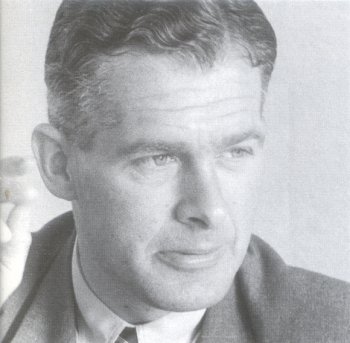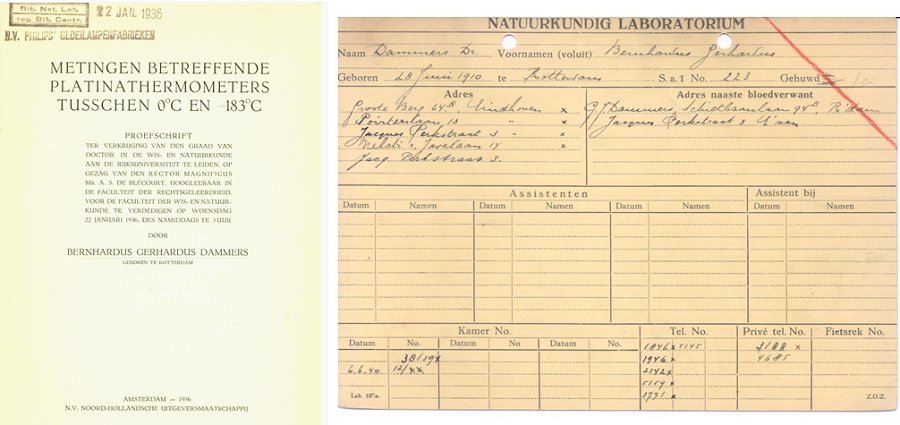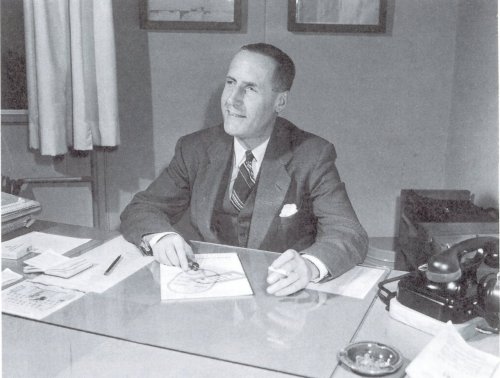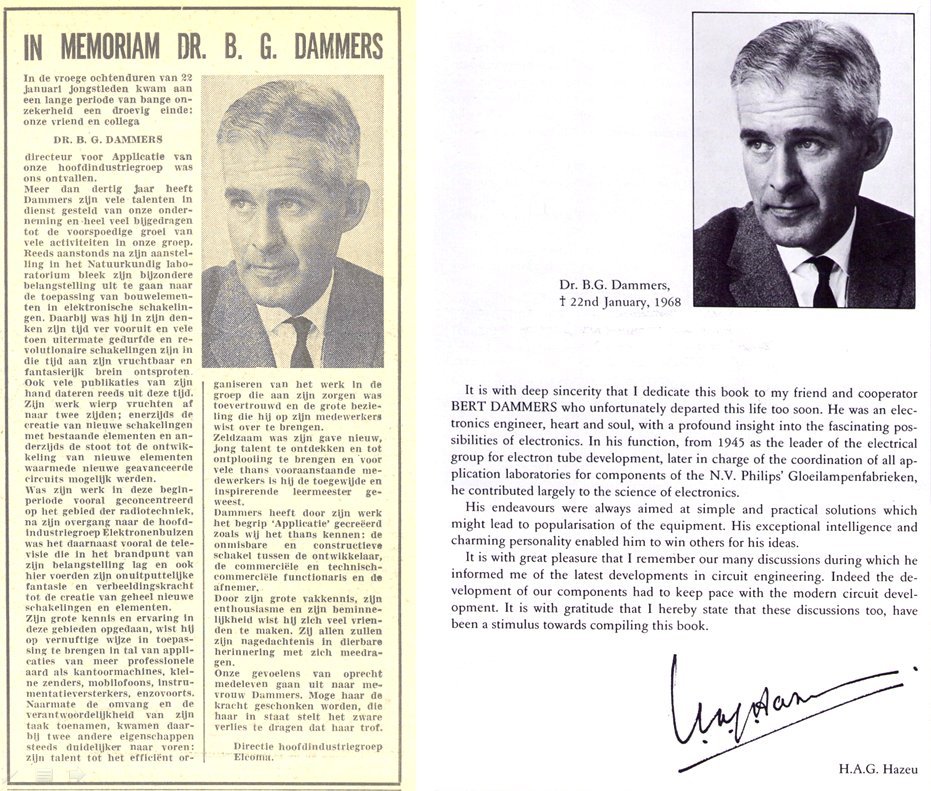

The name of Bert Dammers is almost legendary among Philips tube veterans in Eindhoven, Holland. Dammers headed the consumer tube application / development group at the central tube lab in the famous “White Lady” building at the Emmasingel in Eindhoven. Dammers was a master in conceiving new and clever circuits which could be used in radios and televisions. His extrovert personality made it possible for him to establish excellent contacts with the radio and tube factories (“apparaten fabrieken”). The developers in these factories were rather conservative but Dammers was able to translate their problems into innovative new circuit concepts which resulted better or cheaper products. Often these ideas were translated in highly dedicated tubes which often performed more than one function in one envelope in the group of van Tol. His former colleague Klaas Rodenhuis is quite positive in stating that the efforts of Dammers were one of the main factors in establishing Philips as one of the leading tube manufacturers in the world!
Bernardus Gerhardus (Bert) Dammers was born 28th of june 1910 in Rotterdam. After attending the H.B.S. (“Hoger Burger School”) high school in the 2nd Libanon street in Rotterdam from 1922 to 1929 he went to study Physics at the University of Leiden. On the 2nd of July 1933 he received his Masters degree, after which he continued his study with a PhD research project under supervision of Prof. Dr. W.H. Keesom. Within three years on the 22nd of January 1936 he receives his PhD degree from Leiden University on his thesis entitled “Metingen Betreffende Platinathermometers tussen 0 C and 183 C” (“Measurements concerning platinum thermometers at temperatures between 0 C and -183 C”).

The Thesis of Bert Dammers and his personal record file are still held in the archives of Philips Research.
On the 15th of April 1937 Dammers joins the electronic application group of van Suchtelen at Philips Research in Eindhoven. There he quickly develops an interest in the application of radio tubes in electronic circuits. In this group his dearing and innovative new circuit ideas quickly attract the attention. Most of his work in this period is focused on radio applications. His skills and personality remain not unnoticed, and it is Tromp, the director of all tube develop at Philips, who persuades Dammers to make the move from Philips Research and to lead the consumer tube application group of the tube lab headed by Alma at the Emmasingel. Although Dammers and his direct boss Alma formed a great pair, they were of opposite personalities. Dammers extrovert and talkative, Alma more serious, thoughtful and quiet. If Tromp wouldn’t have placed Dammers personally at that position, Alma surely would not have selected Dammers to head the application group. But the combination worked well and the innovative productivity of Dammers turned out to be an important factor in the growth of the tube division as well as the radio and television factories.
After joining the tube lab, Dammers developed a passion for the new medium: television. This still largely unexplored territory gives him the possibility to unleash his creative talents. Although his group counted more than 100 people, often Dammers could still be found at the work bench testing new circuit ideas. When in 1948 Philips started with experimental television transmissions in and around Eindhoven, the members of his group and the other groups from the tube lab of Alma are given the opportunity to build their own television receiver for which they can obtain a box with components. Dammers himself acts as a “television doctor” to help people with problems they encounter building the set.

After Tromp became a member of the board of directors of Philips, Hazeu succeeded him as head of Tube development and fabrication. Hazeu and Dammers developed a warm friendship.
In the mean time Tromp moved on to become a member of the board of directors of Philips, and his position is taken up by Hazeu. In those days people still worked on Saturday mornings, and Dammers developed the habit of walking in at the office of Hazeu (the boss of his boss) at the end of the morning to update him on the latest developments. Dammers never could stop talking, and Hazeu apparently appreciated the updates because, much to the annoyance of Mrs. Hazeu, her husband regularly arrived too late for dinner. The name of Dammer’s wife remains unrecorded, but Klaas Rodenhuis remembers her as a very kind and charming woman who often accompanied her husband on his business trips, after which there always was some confusion about the declaration of expenditures. The couple unfortunately remained without children. After a long period of illness Dammers died on the 22nd of January at a too early age of 57.

Left an obituary which appeared after the death of Bert Dammers in “de Philips Koerier” of Saturday 27th of January 1968. Right, After his retirement Hazeu wrote a book on all the aspects of electronic components, the book was dedicated to his friend Dammers.